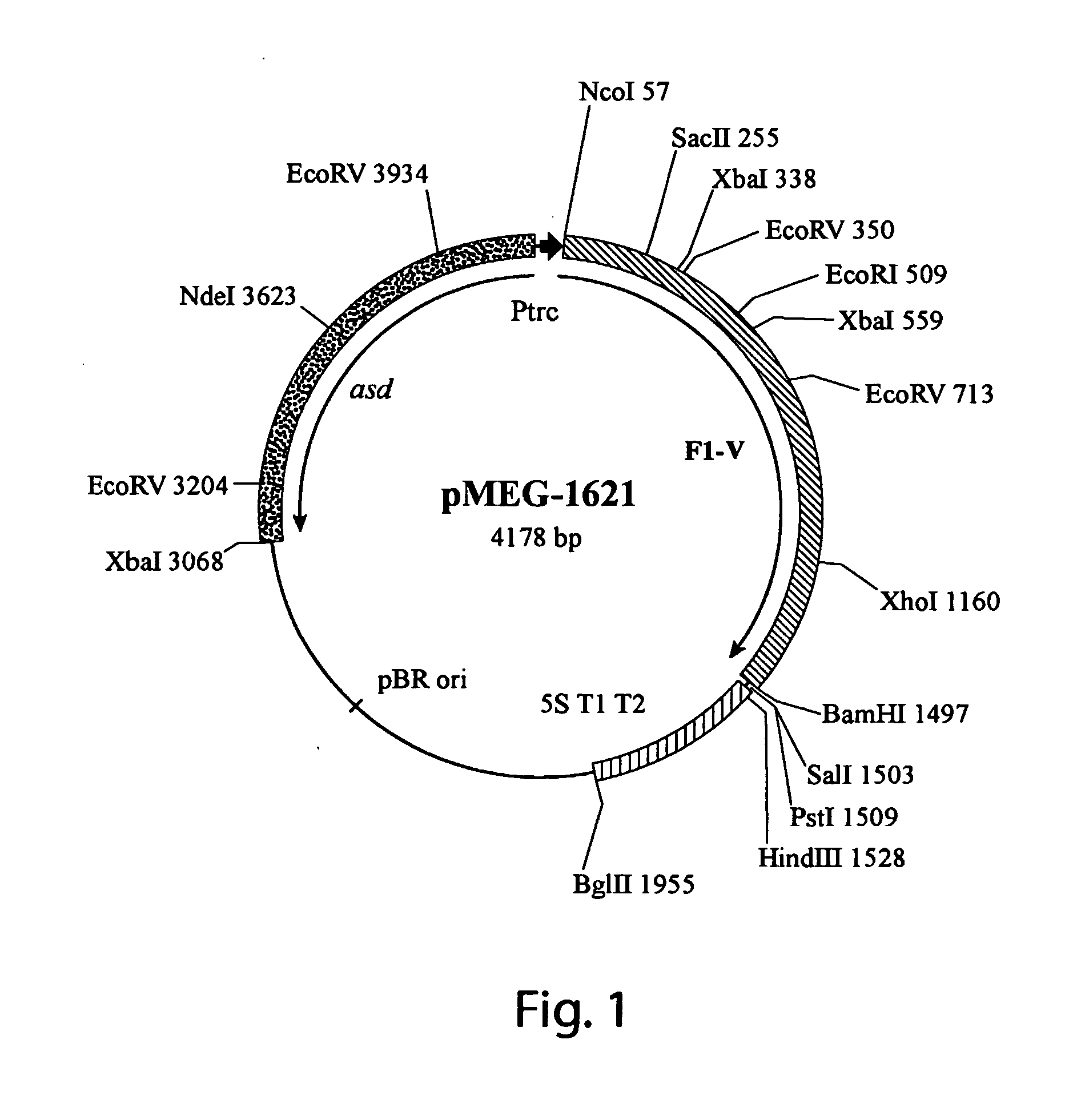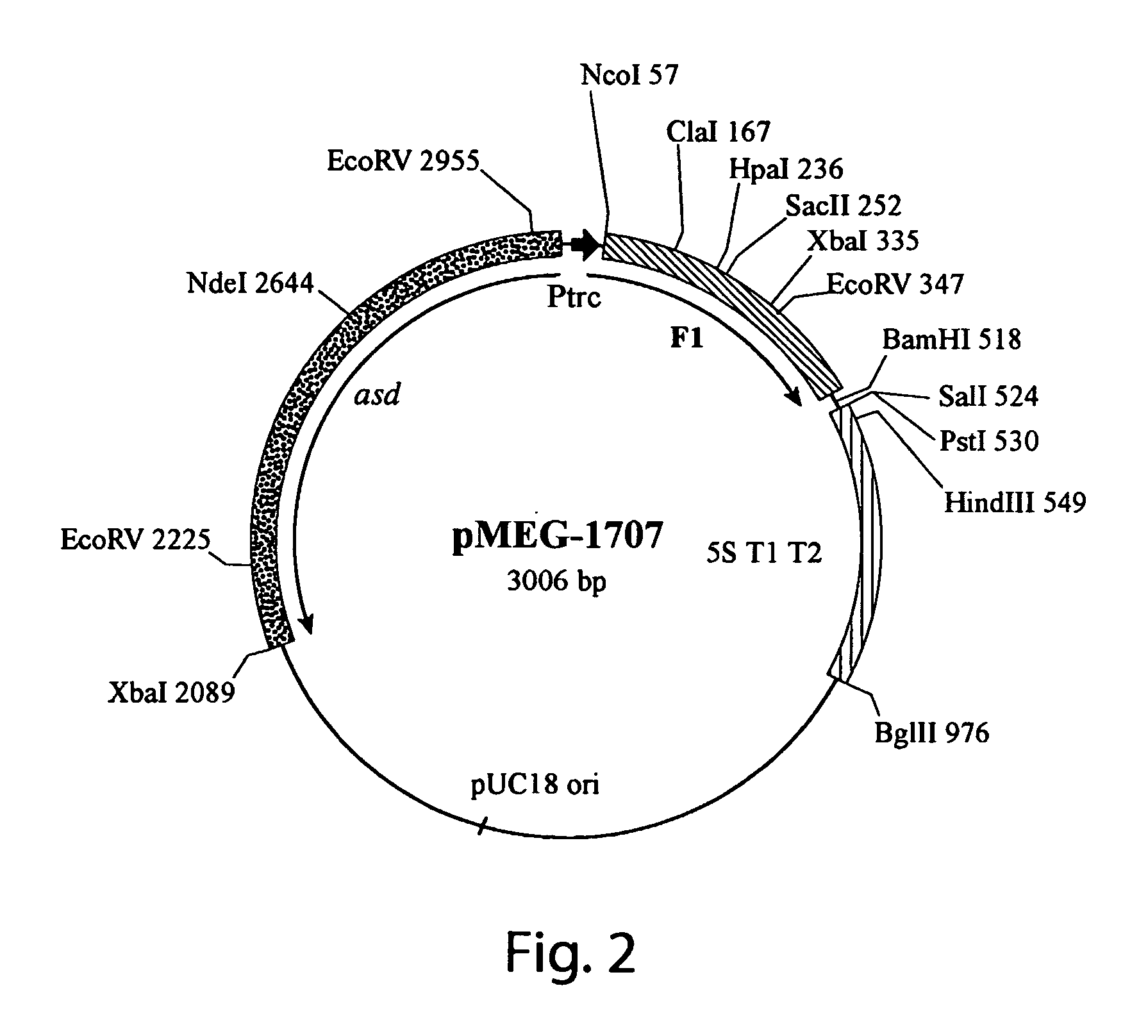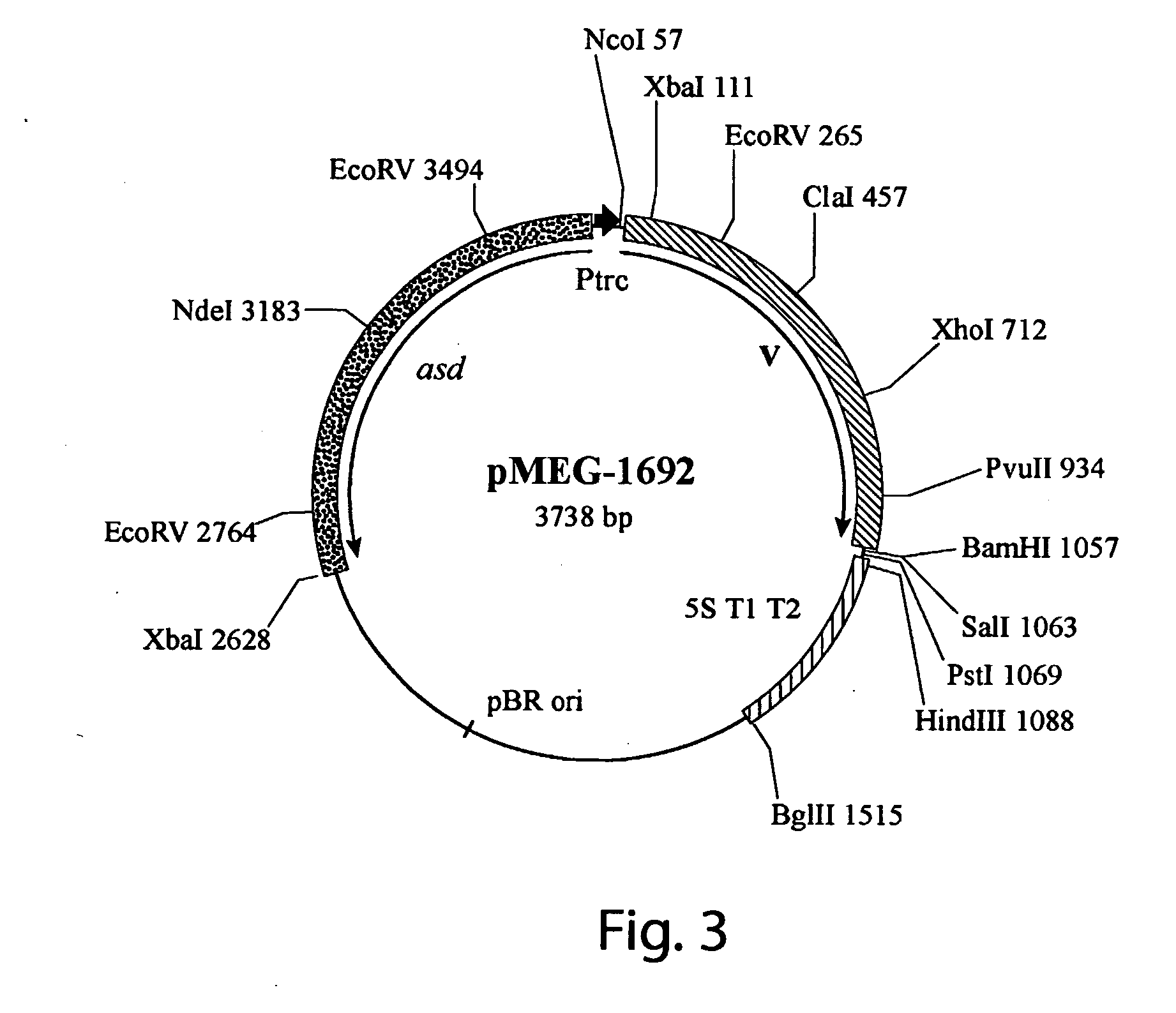Orally-administered live bacterial vaccines for plague
a live bacterial and plague technology, applied in the field of live bacterial vaccines, can solve the problems of plague mortality rate, lack of skilled personnel, and reliance on antibiotic treatment,
- Summary
- Abstract
- Description
- Claims
- Application Information
AI Technical Summary
Benefits of technology
Problems solved by technology
Method used
Image
Examples
example 1
Materials and Methods for Studies on Live Bacterial Vaccines for Plague
[0063] Materials for the preparation of standard growth media were obtained from Becton Dickinson Microbiology (Cockeysville, Md., USA) and prepared following manufacturer's instructions. The enzymes used in DNA manipulations were obtained from New England Biolabs and used according to manufacturer's instructions. Diaminopimelic acid (DAP) was commercially obtained (Sigma Chemical Co., St. Louis, Mo., USA).
[0064] The Escherichia coli and attenuated “Salmonella enterica subspecies enterica” serovar Typhimurium (S. typhimurium) bacterial strains used in the studies described below are listed in Table 1. Strains were grown at 37° C. in Luria broth supplemented with DAP (50 μg / ml) as needed.
TABLE 1Bacterial StrainsBacterial StrainGenotypePlasmidAntigen ExpressedMGN-055φ80d lacZ ΔM15 deoR Δ(lacZYA-pYA232LacI repressorargF)U169 supE44 λ-gyrA96plasmid hostrecA1 relA1 endA1 Δ asdA4Δzhf-2::Tn10 hsdR17 (R− M+)MGN5760Δp...
example 2
Construction and Characterization of an Attenuated Salmonella Bacterial Strain that Expresses an F1-V Fusion Polypeptide from a pBR322-Based, Antigen-Expressing Plasmid
[0073] The following study provided an attenuated Salmonella bacterial strain carrying an antigen-expressing plasmid that comprises a nucleotide sequence of SEQ ID NO:5 that encodes an F1-V fusion polypeptide having an amino acid sequence of SEQ ID NO:6.
Strain Construction
[0074] The coding region for the F1-V fusion protein in the recombinant plasmid pPW731 (DynPort Vaccine Company, Frederick, Md., USA) was amplified by polymerase chain reaction (PCR) amplified using the following primers:
Primer F1-V.asd.F:5′ TACATCCATGGCAGATTTAACTGCAAGC 3′(SEQ ID NO:7)andPrimer F1-V.asd.R:5′ CGCGGATCCTCATTTACCAGACGTGTCATC 3′.(SEQ ID NO:8)
[0075] The F1-V PCR product (PCR amplicon) so obtained and the Asd+ plasmid, pYA3342, were then digested with restriction endonucleases NcoI and BamHI and the digestion products purified using ...
example 3
Construction and Characterization of an Attenuated Salmonella Bacterial Strain that Expresses an F1 Antigen Polypeptide from a pUC18 -Based Antigen-Expressing Plasmid
[0077] The following study provided an attenuated Salmonella bacterial strain carrying an antigen-expressing plasmid that has an origin of replication from plasmid pUC18 and that comprises a nucleotide sequence of SEQ ID NO:1 that encodes an F1 antigen polypeptide having an amino acid sequence of SEQ ID NO:2.
Strain Construction
[0078] The coding region for the F1 protein was PCR amplified from the recombinant plasmid pPW731 obtained from DynPort Vaccine Company using the following primers:
Primer F1.asd.F:(SEQ ID NO:9)5′ TACATGCCATGGCAGATTTAACTGCAAGC 3′Primer F1.asd.R:(SEQ ID NO:10)5′ CGCGGATCCTTATTGGTTAGATACGGTTACG 3′.
[0079] The F1 PCR product so obtained and the pUC-based Asd+ plasmid, pYA3341, were digested with restriction endonucleases NcoI and BamHI, and the digestion products purified using the Qiaquick® PCR ...
PUM
| Property | Measurement | Unit |
|---|---|---|
| Immunogenicity | aaaaa | aaaaa |
Abstract
Description
Claims
Application Information
 Login to View More
Login to View More - R&D
- Intellectual Property
- Life Sciences
- Materials
- Tech Scout
- Unparalleled Data Quality
- Higher Quality Content
- 60% Fewer Hallucinations
Browse by: Latest US Patents, China's latest patents, Technical Efficacy Thesaurus, Application Domain, Technology Topic, Popular Technical Reports.
© 2025 PatSnap. All rights reserved.Legal|Privacy policy|Modern Slavery Act Transparency Statement|Sitemap|About US| Contact US: help@patsnap.com



